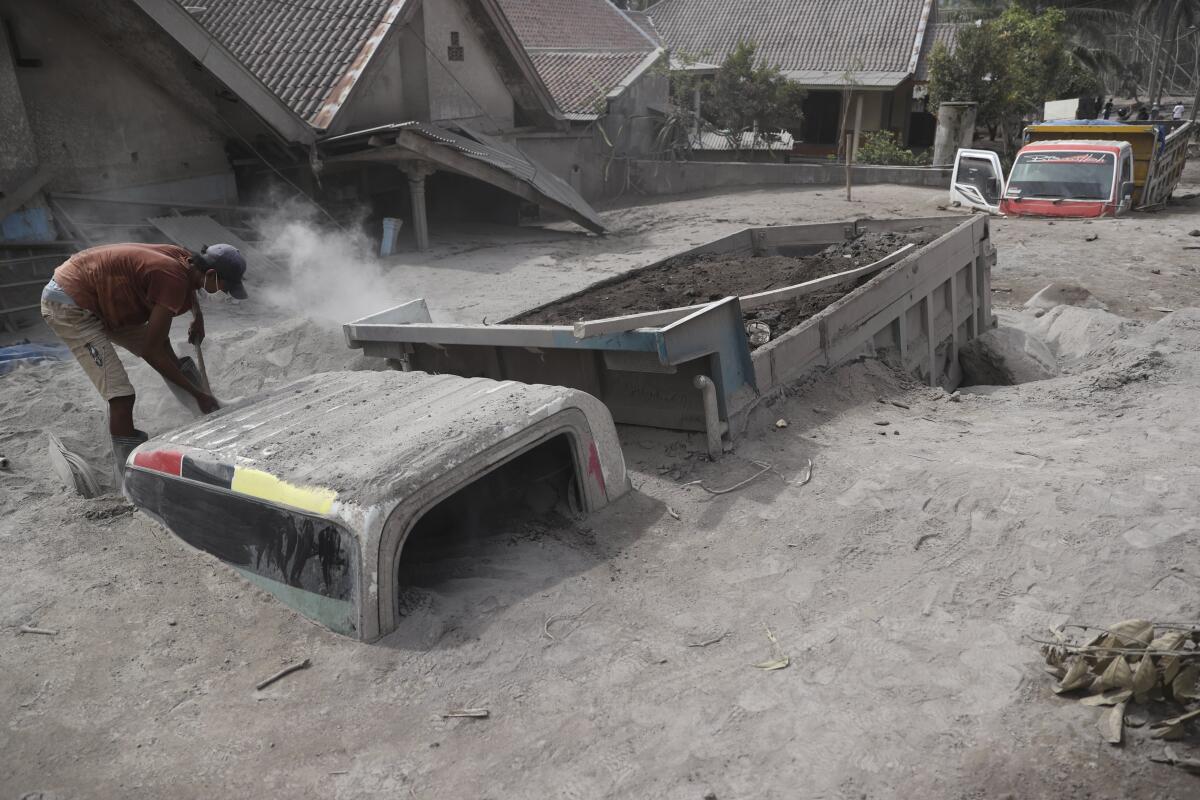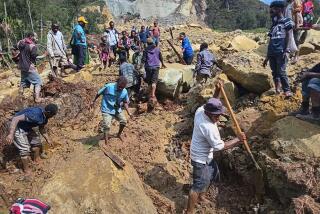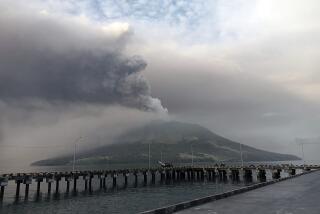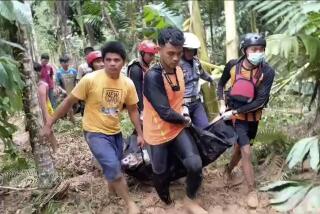Smoldering debris, mud hinder Indonesia volcano rescue

LUMAJANG, Indonesia — Rescuers were searching for survivors Sunday on the slopes of the highest volcano on Indonesia’s island of Java after it was rocked by an eruption that killed at least 14 people, as smoldering debris and thick mud hampered their efforts.
Mount Semeru in Lumajang district in East Java province spewed thick columns of ash more than 40,000 feet into the sky, and searing gas and lava flowed down its slopes after a sudden eruption Saturday triggered by heavy rains. Villages and nearby towns were blanketed with falling ash and several hamlets were buried under tons of mud from volcanic debris.
Authorities warned the thousands of people who fled the volcano’s wrath not to return during Sunday’s lull in volcanic activity, but some villagers were desperate to check on livestock and possessions left behind. In several areas, everything — from the thinnest tree branch to couches and chairs inside homes — was caked with ash.
The debris and lava mixed with rainfall to form thick mud that destroyed the main bridge connecting Lumajang and the neighboring district of Malang, as well as a smaller bridge, said Thoriqul Haq, the district chief in Lumajang.
The eruption eased pressure that had been building under a lava dome perched on the crater. But experts warned that the dome could still further collapse, causing an avalanche of the blistering gas and debris trapped beneath it.
A thunderstorm and days of rain, which eroded and partly collapsed the dome atop the 12,060-foot Semeru, triggered the eruption, said Eko Budi Lelono, who heads the geological survey center.
He said flows of searing gas and lava traveled up to 2,624 feet to a nearby river at least twice Saturday. People were advised to stay 3.1 miles from the crater’s mouth, the agency said.
Television reports showed people screaming and running under a huge ash cloud, their faces wet from rain mixed with volcanic dust.
Despite an increase in activity since Wednesday, Semeru’s alert status had remained at the third highest of four levels since it began erupting last year, and Indonesia’s Volcanology Center for Geological Hazard Mitigation did not raise it this week, Lelono said.
Semeru, the stratovolcano, is also known as Mahameru, meaning “the Great Mountain” in Sanskrit. It has erupted many times over the last 200 years. Still, as with other volcanoes — it is one of 129 under watch in Indonesia, the world’s largest archipelago — more than 62,000 people call Sumeru’s fertile slopes home. The 12,060-foot volcano last erupted in January, with no casualties.
Indonesia, an archipelago of more than 270 million people, is prone to earthquakes and volcanic activity because it sits along the Pacific “Ring of Fire,” a horseshoe-shaped series of fault lines. Currently 54% of the country’s nearly 270 million people live on Java, the country’s most densely populated area.
Officials said earlier they had hoped they could avoid casualties by closely monitoring the volcano, but the death toll quickly rose from one late Saturday to 14 on Sunday.
Abdul Muhari, spokesperson for the National Disaster Mitigation Agency, said 57 people had been hospitalized, mostly with burns, respiratory problems and other injuries. He said rescuers were still searching for seven residents of Curah Kobokan village who were reported missing.
More than 900 villagers streamed into makeshift emergency shelters after Saturday’s powerful eruption, but many others defied official warnings and chose to remain in their homes, saying they had to tend to their livestock and protect their property, said Haryadi Purnomo of East Java’s search and rescue agency.
“We’ll do everything we can to evacuate them by preparing trucks and motorbikes for them to flee at any time,” Purnomo said.
He said his teams were searching for survivors and victims on the southern slope of the mountain, but thick mud, smoldering debris and heavy rain have hampered the search. He described several formerly lush villages south of the crater as “death zones.”
“There’s no life there ... trees, farms, houses are scorched, everything is covered in heavy gray ash,” Purnomo said, adding that several other areas were virtually untouched. Search and rescue efforts were temporary suspended on Sunday afternoon amid fears that smoldering debris and hot ash could tumble down from the crater due to heavy rains.
Indonesian President Joko Widodo said Sunday that he instructed his Cabinet ministers and disaster and military officials to coordinate the response.
More to Read
Sign up for Essential California
The most important California stories and recommendations in your inbox every morning.
You may occasionally receive promotional content from the Los Angeles Times.










